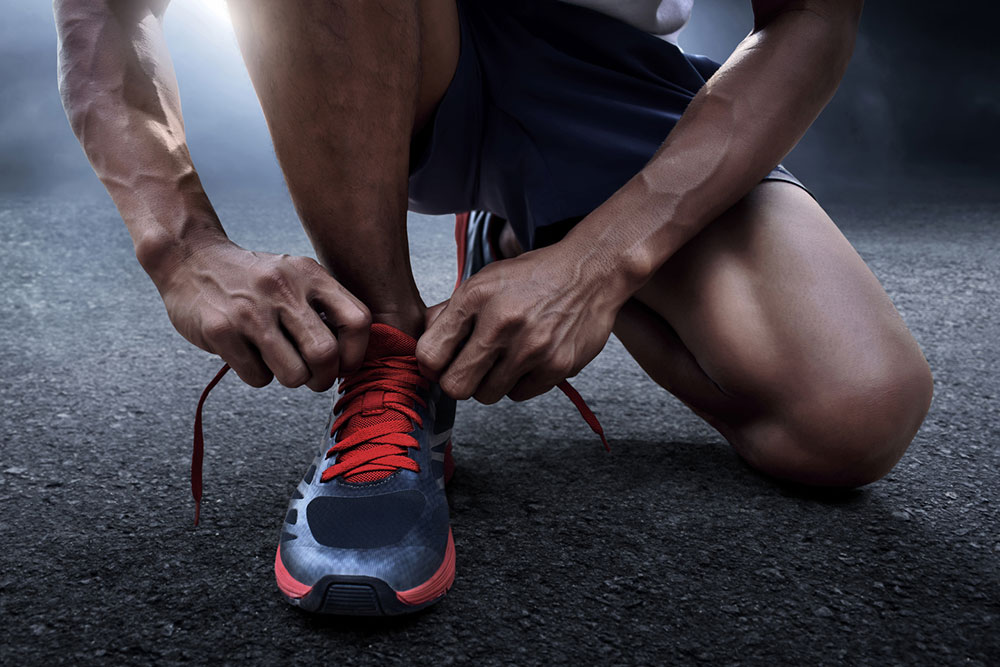10 tips for choosing the right running shoes

Running shoes are designed to offer comfort and support as one moves. These shoes also help prevent injuries while running, support and protect the feet, and improve performance. That said, to ensure one gets these benefits , it is important to choose the right pair that fits well, lasts long, and meets specific needs. So, one must spend some time assessing requirements and exploring available running shoes. A few tips can help one make an informed decision.
1. Double-check foot size
A common misconception is that once one is an adult, their foot size will remain unchanged even with aging. This is incorrect . It is important to measure feet twice a year, or at least right before one buys a pair of shoes. Measuring feet frequently also helps one recognize the pattern of foot growth. A change in foot size should prompt one to upgrade to different running shoes. That said, one should not simply rely on the measurements, find a corresponding shoe size, and make a purchase. Trying on the shoes and moving for a bit is the best way to find the perfect fit.
2. Try on shoes at stores
While one can always find shoes, compare their prices, check their reviews and ratings, and add them to wishlists online to find a perfect fit, one must try running shoes at retail stores. One can try a pair at any shoe store to know exactly how it feels. Manufacturers may have slight variations in sizes. This is why solely relying on the given shoe size can make one buy a pair that doesn’t fit them or hurts their feet over time. Trying on shoes before buying can help eliminate these issues and ensure one buys the most suitable pair.
3. Consider running style
The running style or profile is made up of many components—how the foot strikes the ground, whether the foot rolls inward (overpronation) or outward (underpronation), or whether they have a natural profile. Running shoes are designed with varying levels of stability and support to cater to various running styles and profiles. A physical fitness expert can help one determine their running style and help them choose the right kind of shoes.
4. Prioritize comfort over brand name
It is common to lean towards well-known shoe brands, but that cannot be the sole consideration . This is because the shoes a popular brand offers may not cater to all customers. So, buyers must prioritize the comfort, ease of use, and manufacturer’s reliability over the brand’s popularity.
5. Consider foot type
Just like running styles, foot type varies from person to person. For instance, one may have flat feet, feet with high arches, or feet with neutral arches. Knowing the foot type can help them find shoes that offer just the right amount of cushioning and support. To know the foot type, one can perform a simple wet test at home or get a professional gait analysis done at a store that sells athletic goods.
6. Consider the terrain
One may use running shoes to sprint on normal roads, hike on rocky terrain, or take on other challenging surfaces. Before purchasing a pair, they need to check its sturdiness and ability to tackle specific surfaces. The wrong shoes can wear out over difficult terrains, forcing one to replace them frequently.
7. Prioritize support
The right pair of running shoes must adequately support the feet, calves, knees, and thighs. Such shoes reduce the strain and pain one feels after a hard sprinting session.
8. Conduct a gait analysis
Running styles and gait profiles have a few overlapping features. A person’s gait indicates their overall posture and the kind of movements they make even when they are not running. A gait expert can help one assess their gait and find the shoes best suited for it.
9. Shop in the afternoon
A lesser-known fact is that the feet are at their largest during the afternoon. Feet swell naturally in the daytime. The feet also tend to grow laterally forward when one sprints, so finding shoes that accommodate this change in size is important. For these reasons, purchasing running shoes during the afternoon is a good idea.
10. Consult a licensed expert
Before purchasing any product that has the potential to affect physical well-being, consulting an expert is a wise move. The consultation can help one learn more about their feet, gait, and requirements. It will also help one know if certain types of shoes will harm their posture and feet. This will ensure one invests in the right shoes.


